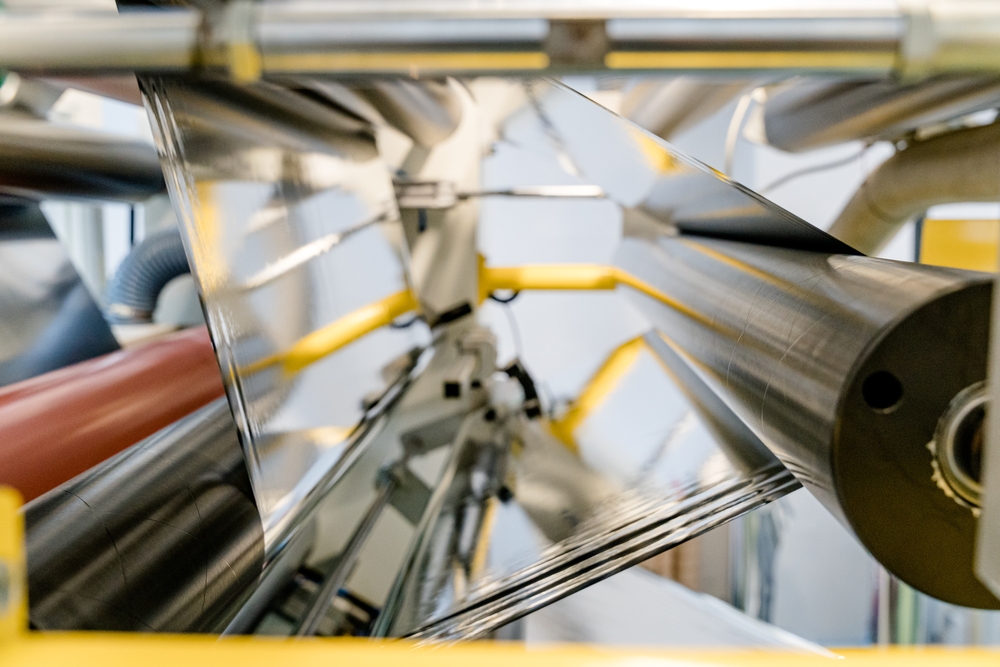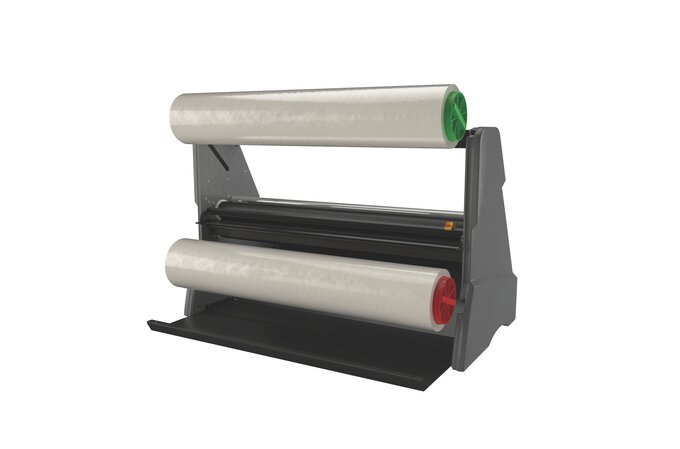Hot vs. Cold Lamination: What’s the Difference?
Lamination is a helpful process that protects all sorts of items, including important documents, posters, and educational materials. It can extend their lifespan, ensuring the delicate and very rippable paper inside doesn’t fall prey to the hands of students. While small, personal-sized laminators (or even clear tape as a last resort) can handle small projects, they’re not the most practical choice for educational settings where larger volumes and projects are the norm.
So, you might find yourself looking into educational laminators. As you search, you’ll come across two options: hot and cold. So, what’s the difference between hot lamination vs. cold lamination? Which one is better for your school’s needs? Let’s find out.
What is Hot Lamination?
Hot lamination is the more traditional method of lamination. It uses heat to seal a layer of clear plastic film over your document. It works by heating the adhesive on the film and using pressure to press the film tightly around the document, creating a strong bond that keeps the contents inside safe.
Many schools and offices use hot laminators because they tend to be faster and more cost-effective for high-volume lamination jobs. Plus, they offer a durable and professional finish, so they’re the go-to solution for many educational purposes.
Pros and Cons of Hot Lamination
Like any equipment, hot laminators have a couple of benefits and drawbacks. The most notable perks include:
- Strength: Hot lamination creates a durable, long-lasting seal that can withstand regular use, making it great for items that will be regularly handled by students, like flashcards or classroom signs.
- Variety: Hot lamination offers a range of thickness options, each suited to different purposes. Thicker laminates provide extra protection, while thinner laminates are flexible and easier to fold and cut.
- Readily available: Supplies for hot lamination are easy to find and often readily available, especially in craft stores.
- Professional finish: Hot lamination produces a smooth, glossy finish that enhances the colors and overall appearance of the document or material.
On the flip side, there are a couple of potential drawbacks to keep in mind, including:
- Heat sensitivity: The use of heat means that hot lamination isn’t suitable for everything. High temperatures could damage heat-sensitive materials like photos, certain fabrics, or inkjet prints.
- Warm-up time: Hot laminators need a few minutes to heat up, which can cause delays, which isn’t ideal if you’re in a rush.
- Risk of burns: Since these machines operate at high temperatures, there’s a small risk of burns if users aren’t careful.
What is Cold Lamination?
Cold lamination, as the name suggests, doesn’t require heat. Instead, it uses pressure to activate the adhesive on the lamination film. With a cold laminator, you place your document between two adhesive-backed plastic sheets and slowly feed it through the machine. As it passes through, the machine applies pressure that bonds the laminate and document together.
Cold lamination is a top choice for materials that are sensitive to heat, such as photographs, thermal prints, or delicate papers. While this type of laminator is a bit slower, it’s a great alternative for special projects that require a different type of lamination.
Pros and Cons of Cold Lamination
Like hot laminators, cold lamination comes with its own set of unique benefits and drawbacks. Key advantages include:
- Safe for heat-sensitive materials: Since cold lamination doesn’t require heat to create a bond, it’s safe for delicate materials that could warp or discolor under heat.
- No warm-up time: The lack of heat also means that you won’t have to wait for the machine to heat up, making this type of laminator perfect for small or quick jobs.
- Safe for all users: Cold laminators present no risk of burns or damage from heat, so they’re a great choice for use in classrooms or offices where students or untrained staff might handle the equipment.
- Flexible finish: Cold-laminated items tend to be more flexible, which is great for when you need materials that can bend easily without cracking or peeling.
Of course, there are a couple of drawbacks to keep in mind, including:
- Less durable: While cold lamination provides protection, it may not be as durable as hot lamination. The adhesive in cold lamination isn’t activated by heat, so it may not be as suitable for high-use situations.
- Limited thickness options: The thickness options are limited, especially compared to hot lamination, which can limit the finished product’s durability or rigidity.
- Matte finish: Cold lamination usually produces a matte or slightly textured finish, unlike the sleek, glossy finish of hot lamination.
Which One is Right for Your Classroom?
Now that we know the differences between cold lamination vs. hot lamination, which one is right for your classroom? Ultimately, the best laminator for your classroom depends on what you’re laminating and how you plan to use the laminated items.
For example, let’s say you need to create laminated classroom materials that will be frequently used or handled by many students. This could include flashcards, study aids, or reusable worksheets designed for use with dry-erase markers. In this case, hot lamination is an excellent fit since it creates a strong, durable seal that will protect your materials from damage.
On the flip side, let’s say you teach a photography class and plan to have your students laminate the photos for use in a class project. Or, maybe you’re an art teacher who wants to have your students laminate projects with different textures or delicate materials. Or, maybe you plan to use the laminator for a few small projects at a time. If that sounds like you, a cold laminator might be the best fit.
It all depends on your specific needs and what you plan to use the laminator for. Each option has merits, so neither one is inherently better than the other.
Elevate Your Classroom Projects With a Laminator From AGC Education
Whether you choose a hot or cold laminator, these machines can greatly contribute to your classroom. With these machines, you can create more durable classroom materials, protect important documents, and much more! If you’re ready to up your laminating game with a hot or cold laminator, AGC Education has what you need.
We offer hot laminators, which are great for projects that demand extra durability, and cold laminators, which are ideal for sensitive and delicate projects. We also offer different lamination film options to help get the ball rolling.
Contact us to learn more about our laminators and get a quote today.





